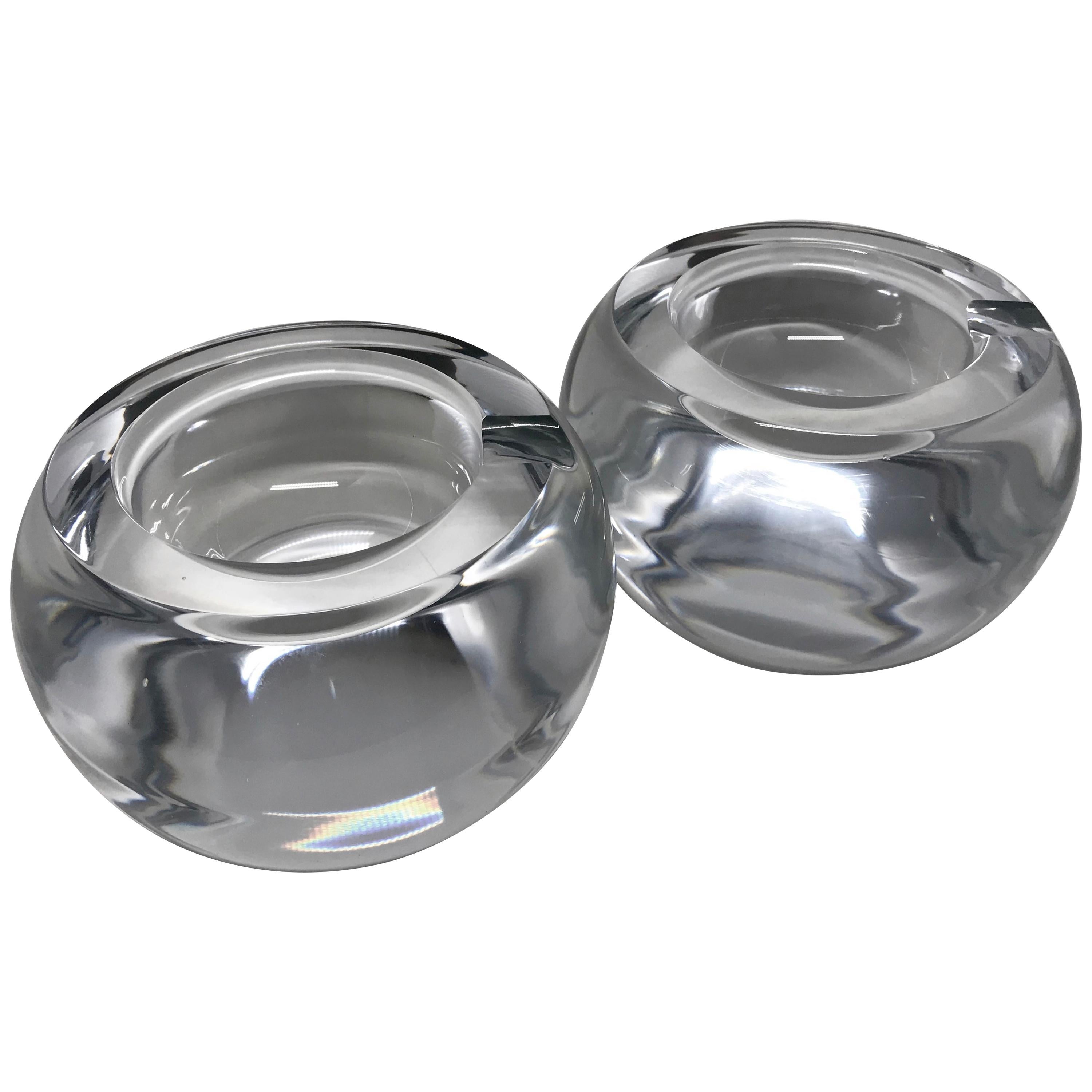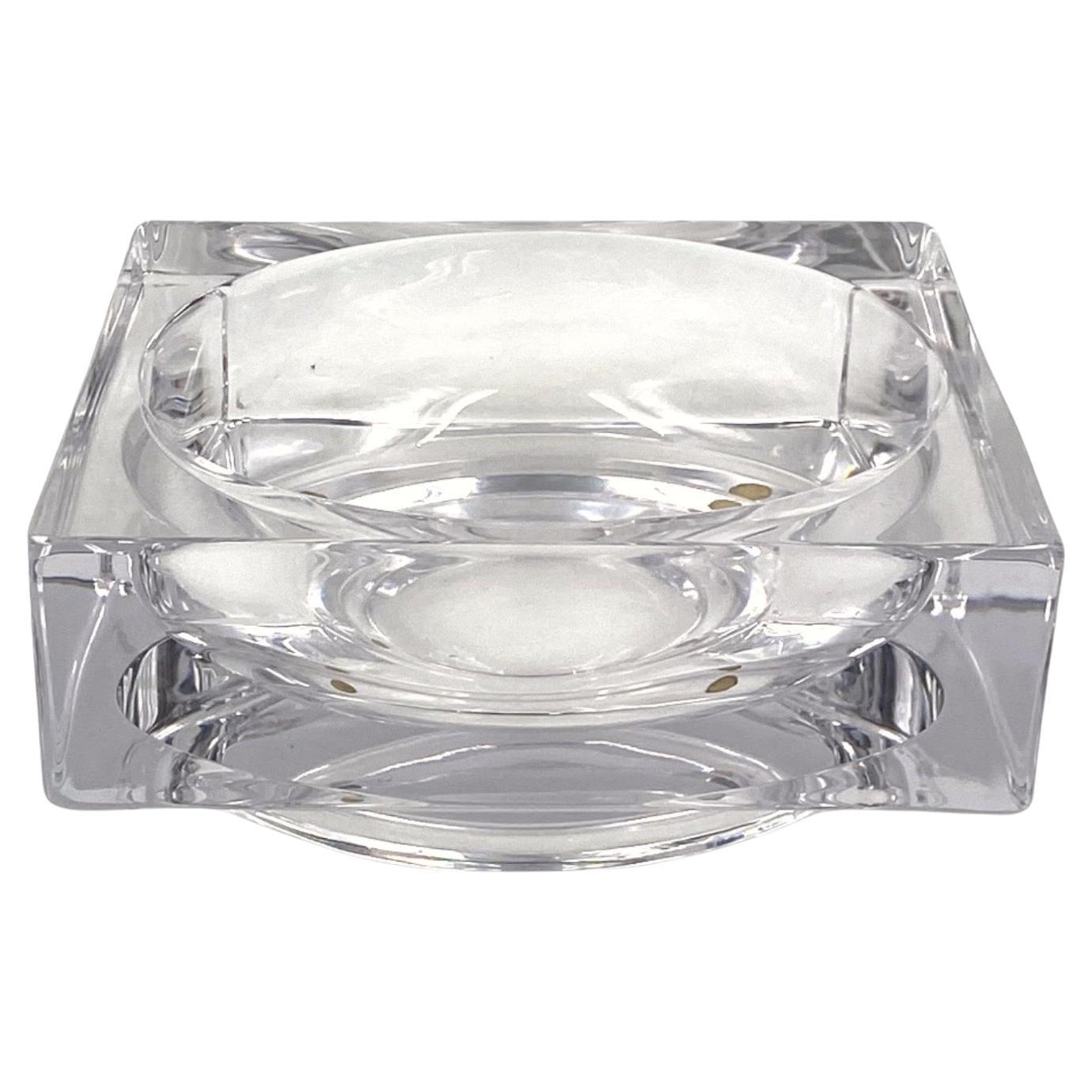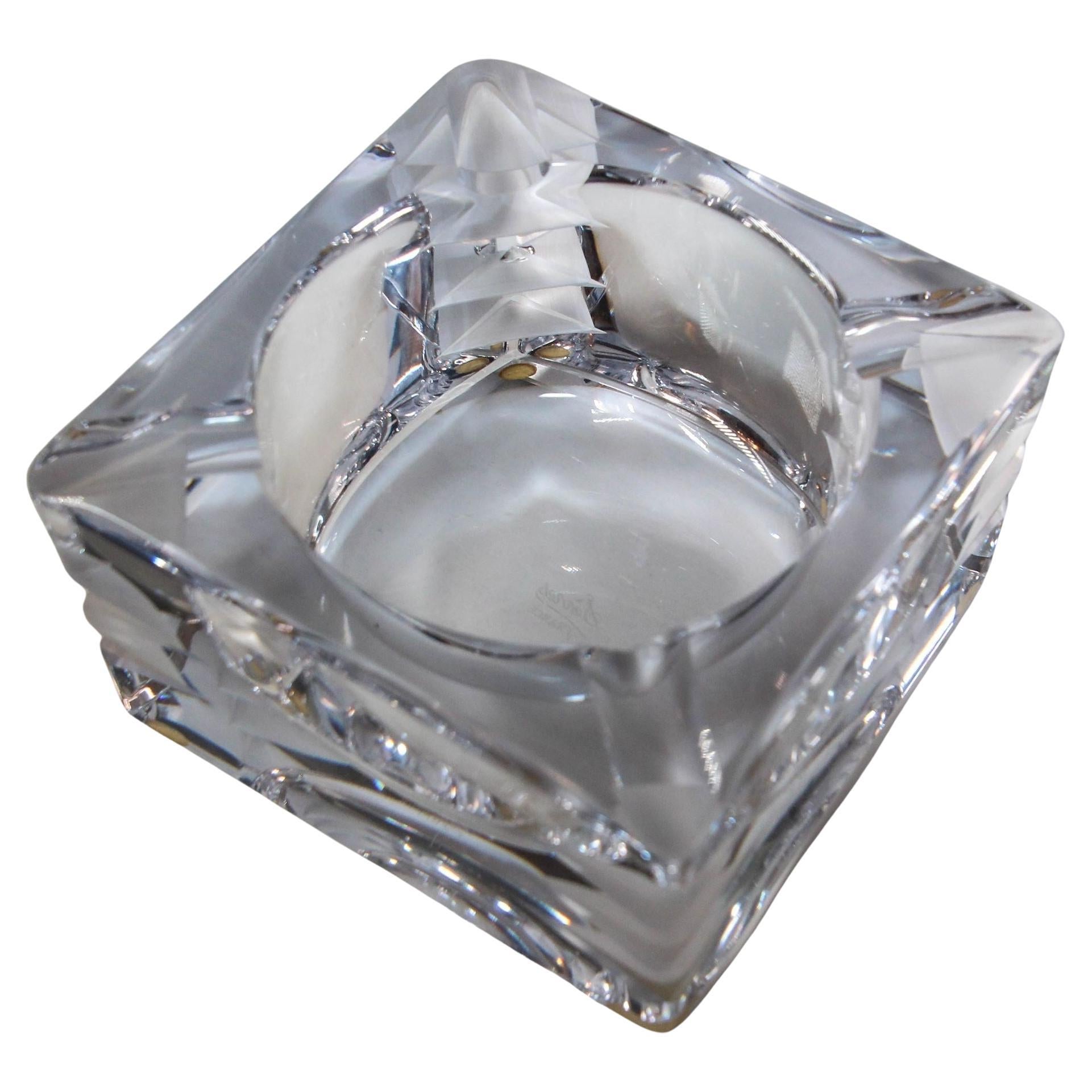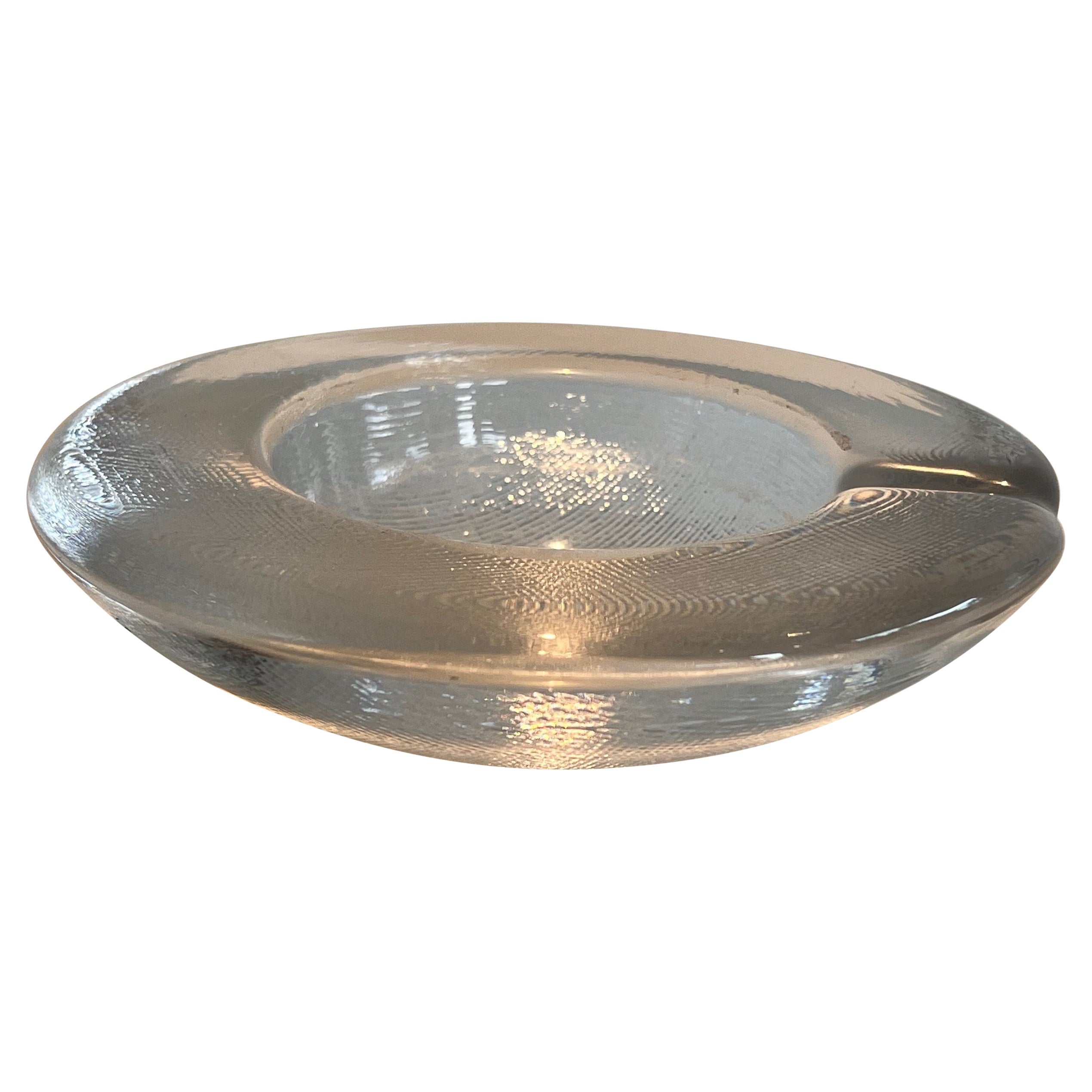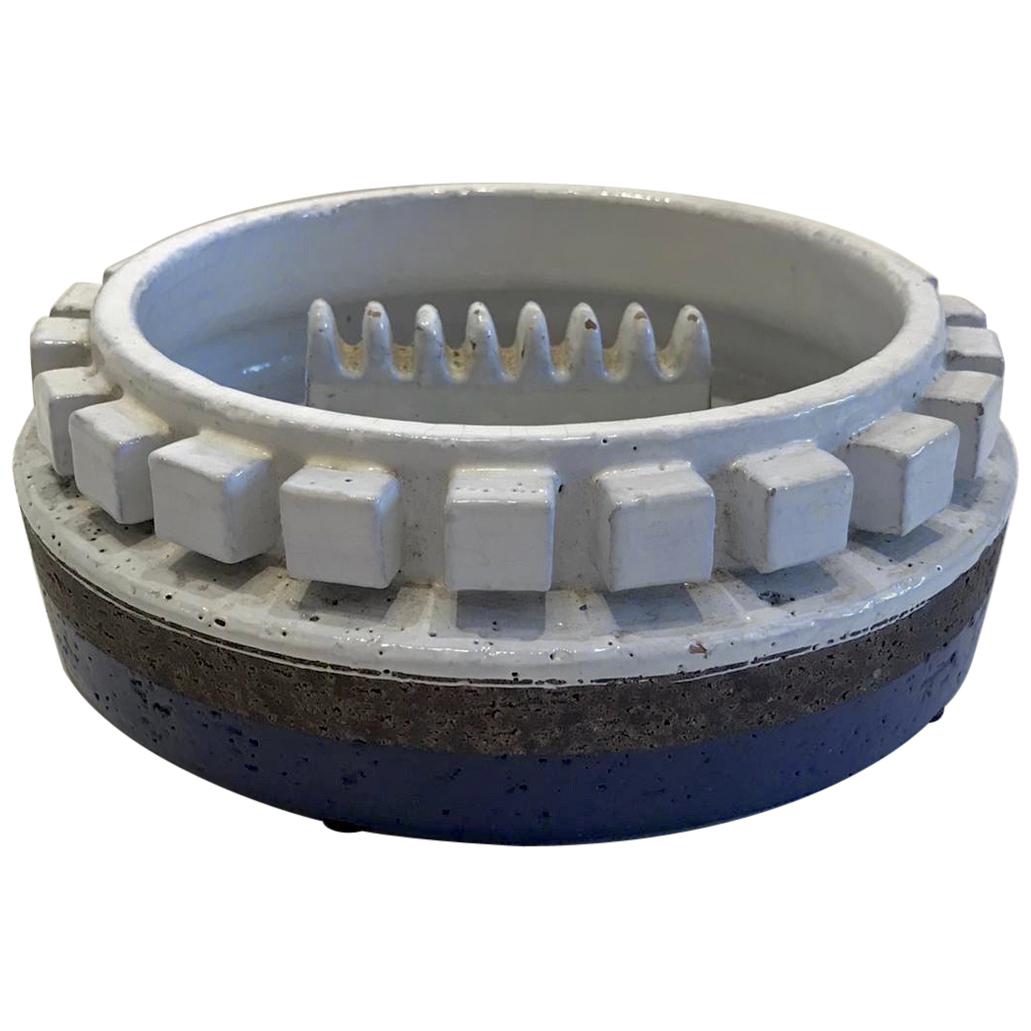Sevres Chunky Crystal Ashtray
About the Item
- Creator:Manufacture Nationale de Sèvres (Manufacturer)
- Dimensions:Height: 2.75 in (6.99 cm)Width: 5.25 in (13.34 cm)Depth: 5.25 in (13.34 cm)
- Style:Mid-Century Modern (Of the Period)
- Materials and Techniques:
- Place of Origin:
- Period:
- Date of Manufacture:Mid-20th Century
- Condition:Wear consistent with age and use.
- Seller Location:New York, NY
- Reference Number:1stDibs: LU1084228845732
Manufacture Nationale de Sèvres
A maker of exemplary European ceramics for hundreds of years, Manufacture Nationale de Sèvres has produced porcelain of the highest quality since 1740.
The factory enjoyed royal patronage from its earliest days, and its most prominent patrons in the late 1700s — King Louis XV of France and his mistress, Madame de Pompadour — commissioned some of the period’s most elegant and striking pieces (only the truly wealthy could afford porcelain at this time). The company was originally established in Vincennes but was moved at the request of Madame de Pompadour, in 1756, to Sèvres, near Versailles, so that its operations would be closer to her château.
Sèvres became a mighty and much-revered factory working under a special grant from King Louis XV — the company’s owner as of 1759 and whose abundance of orders for special state gifts put financial strain on the company. Madame de Pompadour is said to have commissioned Sèvres to create an entire indoor garden of porcelain botanicals, for example.
While Sèvres gained a sterling reputation for its soft-paste porcelain wares, the company was late in entering into the production of hard-paste porcelain.
Hard-paste porcelain is the most common type of Chinese porcelain, then a widely exported and profitable product that was not made in Europe until the 18th century. The resources at Sèvres were largely relegated to meeting the demands of Louis XV, and secondly, it did not acquire the secret formula for hard-paste porcelain until 1761. Until it obtained the coveted secrets behind hard-paste porcelain from a chemist named Pierre-Antoine Hannong — and, years later, gained access to the elusive raw materials to make hard-paste porcelain — Sèvres produced soft-paste porcelain for decades that was widely celebrated but is comparatively a far weaker type as opposed to the hard-paste productions of the company’s rival, Meissen, in Saxony, the first to produce true porcelain outside of Asia.
The artisans at Sèvres applied the rarest and most difficult-to-produce colors to their decorative objects and dinner services. One such color, the bright bleu de roi, became the manufacturer’s signature shade and is found on many of their objects. Sèvres also experimented with rarely glazed or unglazed works that bore no decoration at all — bisque porcelain, French for “biscuit,” refers to unadorned white porcelain sculptures made at Sèvres that resemble white marble after being kiln-fired.
Sèvres marks were applied over the glaze or rendered with cuts by a sharp tool — authentic Sèvres porcelain is most commonly marked with two interlaced Ls that are painted in blue and enclose a third letter. Painters and potters were tasked with affixing marks to record their role in the creation of a particular piece, and as a lot of these artisans’ names are recorded in archival factory materials — and there is also much to be learned at the Sèvres museum — it’s likely that you can accurately identify your Sèvres piece.
Find antique and vintage Manufacture Nationale de Sèvres vases, urns, sculptures and more on 1stDibs.
- ShippingRetrieving quote...Ships From: New York, NY
- Return PolicyA return for this item may be initiated within 3 days of delivery.
- Pair of Chunky Crystal AshtraysLocated in New York, NYPair of chunky crystal ashtrays. Heavy pair round bulbous vintage ashtrays in Classic midcentury style, American, circa 1960s. Dimensions: 5.5" diameter x 3.25" height, 4.5" diamete...Category
Mid-20th Century American Mid-Century Modern Ashtrays
MaterialsCrystal
- Silver and Vermeil German Deco AshtrayLocated in New York, NYSilver and vermei German Deco ashtray. Small eight sided silver and gilt washed ashtray for individual use, Germany, late 1930s. Dimensions: 2.75" W x 2" ...Category
Mid-20th Century European Ashtrays
MaterialsVermeil, Silver
- Crystal Bubble Globe PaperweightLocated in New York, NYCrystal bubble globe paperweight. Vintage French clear crystal globe with "planetary" bubble inclusions for desktop use or shelf display, with eviden...Category
Mid-20th Century French Paperweights
MaterialsCrystal
- Antique Bacarat Crystal VaseBy BaccaratLocated in New York, NYAntique Bacarat crystal vase. Baluster form neoclassical style tall French crystal vase with banded neck and rim with thick cut octagonal form base. France 1840’s Dimensions:15.25” ...Category
Antique Mid-19th Century French Vases
MaterialsCrystal
- Antique Cut Crystal VaseLocated in New York, NYAntique cut crystal vase. Irish cut crystal footed vase with diapered cut rolled lip and faceted body, Ireland, mid-19th century. Dimension: ...Category
Antique Mid-19th Century Irish Vases
MaterialsCrystal
- Native American-Form Luster Crystal GirandoleLocated in New York, NYNative American-Form luster crystal girandole. Two-light gilded and patinated brass and iron girandole with original cut-glass prisms of Native Ameri...Category
Antique Mid-19th Century American Candle Holders
MaterialsCrystal, Marble
- Monumental molded crystal ashtray, Sevres France 1970sBy Cristalleries De SevresLocated in Firenze, ITMonumental molded crystal ashtray Cristal de Sevres, France 1970s Large cubic shape on a circular base, with a modernist design Acid signed 'Sevres' ...Category
Vintage 1970s French Hollywood Regency Ashtrays
MaterialsCrystal
- Crystal de Sevres Cigar Ashtray France 1970sBy Cristalleries De SevresLocated in North Hollywood, CAMolded Crystal de Sevres Cigar Ashtray France, 1970s Large heavy molded crystal ashtray Cristal de Sevres cubic shape cut glass with a modernist design....Category
Late 20th Century French Ashtrays
MaterialsCrystal
- Crystal AshtrayLocated in Marcq-en-Barœul, Hauts-de-FranceThis ashtray or vide-poche is made of crystal. This is a French or Italian work. Circa 1970Category
Vintage 1970s French Mid-Century Modern Ashtrays
MaterialsCrystal
- Bitossi for Raymor Chunky and Oversized Ashtray/ CachepotBy Bitossi, RaymorLocated in East Hampton, NYWonderful rich blue base and grayish white top glazed ceramic ashtray. So many beautiful details to this large round bowl.Category
Vintage 1960s Italian Mid-Century Modern Ashtrays
MaterialsCeramic
- Ashtray Crystal, 1950Located in Ciudad Autónoma Buenos Aires, CCrystal We have specialized in the sale of Art Deco and Art Nouveau and Vintage styles since 1982. If you have any questions we are at your disposal. Pushing the button that reads ...Category
Vintage 1950s Italian Space Age Ashtrays
MaterialsCrystal
- Ashtray Crystal, 1950Located in Ciudad Autónoma Buenos Aires, CCrystal We have specialized in the sale of Art Deco and Art Nouveau and Vintage styles since 1982. Why are there so many antiques in Argentina? In the 1880 – 1940 there was a grate wave of immigration encouraged by the periods of war that were taking place. 1st World War took place between 1914 and 1918 2nd World War took place between 1939 and 1945 The immigrants options were New York or Buenos Aires. Tickets were cheap and in Buenos Aires they were welcomed with open arms, as it was a country where everything was still to be done. Argentina was the country of new opportunities, labour was needed and religious freedom was assured, in many cases the of the family travel first until they were settled and then the rest of the family members join them. In the immigrant museum “Ellis Island Immigrant Building” in New York you can se the promotional posters of the boats that would take them to a new life. Between the years 1895 and 1896, Argentina had the highest DGP (gross domestic product) per capita in the world according to the Maddison Historical Statistics index, this situation arose due to the large amount of food being exported to European countries, which were at war. The Argentinean ships left the port of Buenos Aires with food, but they returned with furniture, clothes and construction elements, (it´s common to see this the old buildings of the historic neighbourhood of San Telmo, the beams with the inscription “Made in England)”, as well as many markets that were built in Buenos Aires, such us the San Telmo Market, whose structure was brought by ship and afterwards assembled in 900 Defensa Street. With the great influence of European immigrants living in the country, the children of the upper classes travelled to study in France, resulting in the inauguration of “La Maison Argentinienne”, on 27th of June 1928, in the international city of Paris, which hosted many Argentinians that were studying in Frace. It´s the fourth house to be built after France, Canada and Belgium, being the first Spanish-speaking one. Still in place today (17 Bd Jourdan, 75014, Paris, France). Many of the children of these wealthy families who attended international art exhibitions, museums and art courses abroad, took a keen interest in the European style. This is why Buenos Aires was at the time referred as “The Paris of South America”. Between the years 1890 and 1920 more than a hundred Palaces were built on Alvear Avenue the most exclusive avenue in Buenos Aires. Today some of these palaces have been transformed into museums, hotels and embassies. In the year 1936, the Kavanagh building was inaugurated, it was the tallest reinforced concrete building in South America. During 1994 the American Society of Civil Engineers distinguished it as an “international engineering milestone”, and it´s now considered a World Heritage of Modern Architecture. At the time was common to hire foreign architects such as Le Corbusier, who visited Buenos Aires/Argentina in 1929 and in 1948 he drew up the blueprints for a house built in La Plata City (which was declared a World Heritage Site). In 1947, the Hungarian architect Marcelo Breuer designed “Parador Ariston” in the seaside city of Mar del Plata. After an Argentinean student at Harvard University convinced him to come to Argentina. He worked on an urban development project in the Casa Amarilla, area of La Boca. The Ukrainian architect, Vladimiro Acosta, arrives in Argentina in 1928 and worked as an architect until que moved to Brazil. Antonio Bonet, a Spanish architect who worked with Le Corbusier in Paris, arrives in Argentina in 1937, where he carried out several architectural works and in 1938 designs the well-known BFK chair. Andres Kálnay, of Hungarian origin, made around 120 architectural masterpieces, among which the former Munich brewery stands out, he even made the furniture’s design. The German architect, Walter Gropius, director of the Bauhaus, lived in Argentina, where he wrote articles for “Sur” magazine and founded in Buenos Aires, an architectural firm with Franz Möller, who was also an architect, where he built two houses. At the same time several famous designers decided to immigrate to Argentina, among them we can find the well-known French designer, Jean-Michel Frank, who arrived in the country in 1940 and also worked for the Rockefeller family. Special pieces were made, which were sold exclusively in the country, such as the well-known German company “WMF”, who sold their products by catalogue, which were chosen by the ladies of high society in the list of wedding gifts, as well as the pieces designed by Christofle. The Swiss sculptor Alberto Giacometti, made special pieces for Argentinean mansions. In 1904 the first Jansen branch outside Paris was established in Buenos Aires, as the Argentinean clientele demanded a large amount of furniture, from the end of the 19th century to the mid-20th century. In 1970, the brand Rigolleau Argentina made pieces authorised by Lalique. The brands Maple and Thompson also set up shop in the country. The French plastic artist, Marcel Duchamp moved to Argentina in 1918-1919. Glass signed Gallé, Charder, Leverre, Schneider, Muller and other French firms. They were bought in flower shops and were given to ladies with beautiful floral arrangements. Some furniture manufacturers travelled to international fairs and bough the patterns to produce the furniture in Argentina, such as the furniture firm Englander and Bonta, who bought the patterns ins Italy. It is worth mentioning that in Argentina we have the largest community of Italians outside...Category
Vintage 1950s Italian Space Age Ashtrays
MaterialsCrystal
